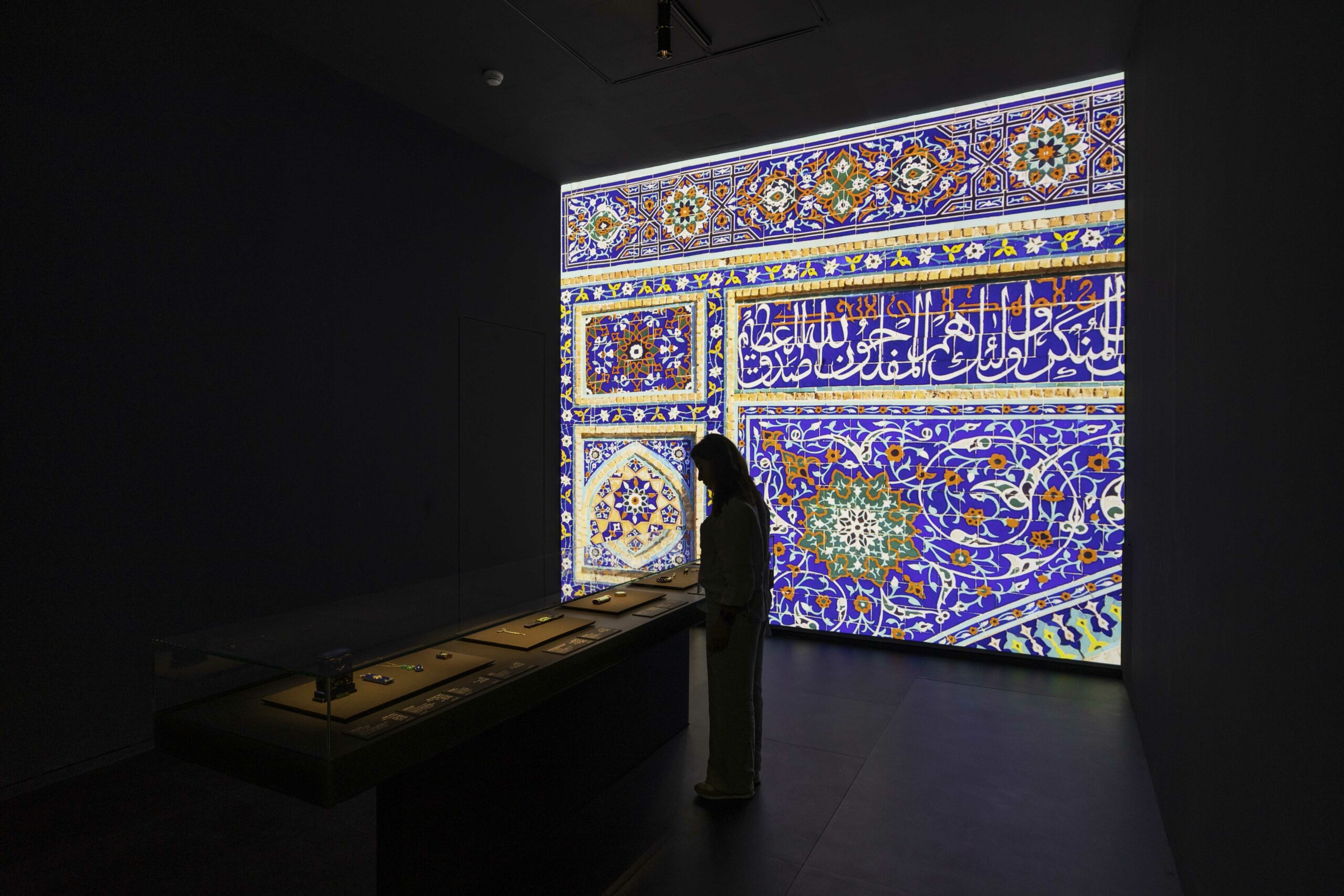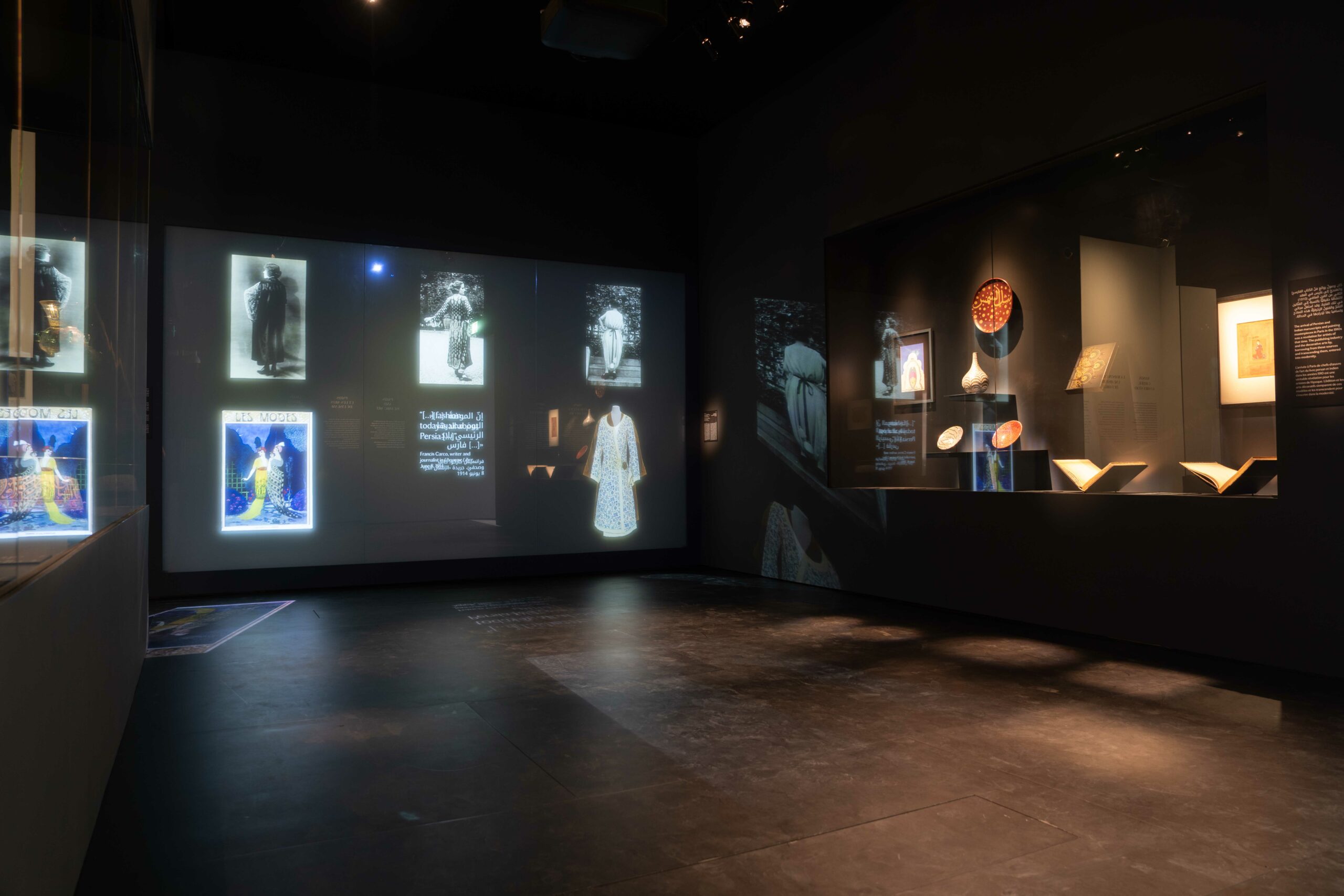CARTIER, ISLAMIC INSPIRATION AND MODERN DESIGN: THE PRODUCTION OF A TRAVELLING EXHIBITION
Co-organised by Louvre Abu Dhabi, the Musée des Arts Décoratifs, the Musée du Louvre and France Muséums, with the support of Cartier, the new temporary exhibition “Cartier, Islamic Inspiration and Modern Design” will be presented at Louvre Abu Dhabi from 16 November 2023 to 24 March 2024.
Curated by Judith Henon-Raynaud, Chief Curator and Deputy Director of the Department of Islamic Art at the Musée du Louvre, and Évelyne Possémé, Former Chief Curator of Ancient and Modern Jewellery at the Musée des Arts Décoratifs, assisted by Fakhera Ahmed Mubarak Alkindi, Senior Curatorial Assistant at Louvre Abu Dhabi, this exhibition explores the influence of the Islamic art on Cartier designs since the early 20th century.
Florence Lallement and Flora Roy, Project Managers at France Muséums for this exhibition, here discuss the inception of the project for Louvre Abu Dhabi and the challenges involved in the design, production and coordination of internationally celebrated exhibitions.
Please tell us about the exhibition “Cartier, Islamic Inspiration and Modern Design” and its journey to Louvre Abu Dhabi.
Florence Lallement: The exhibition “Cartier, Islamic Inspiration and Modern Design” explores the influences of the Islamic art on the development of a modern aesthetic, while also presenting visitors with an in-depth insight into the world of Cartier’s sources of inspiration. It will feature more than 400 jewels and pieces of high jewellery from the Maison Cartier together with masterpieces of Islamic art and prestigious pieces from public and private collections, such as miniatures, graphic arts, textiles and objects of decorative art. Presented in Paris in 2021 and in Dallas in 2022, the exhibition at Louvre Abu Dhabi will this time be enhanced with works from the museum’s own collection and regional loans, offering new perspectives and new comparisons of form and aesthetic.
Flora Roy: The exhibition casts new light on how jewellery takes inspiration from the decorative arts, and removes distinctions between spheres of inspiration by demonstrating how influences and formal types travel between cultures. It highlights the creative process employed at Cartier, whose designers drew on the arts of Islam to create a new and resolutely modern aesthetic. The exhibition also explores the link between jewellery and works of art from the Islamic world and other regions, such as India, immersing visitors in the jewellers’ creative process, from the selection of the stones to the design of the pieces.
What role has France Muséums played in the development and production of this travelling exhibition?
Florence Lallement: France Muséums’ role has been fundamental at every stage of the exhibition’s development. We provide support to the curators, manage the production process, coordinate the exhibition design and mediation devices, we deal with the transportation and handling of the works and the coordination of the catalogue, and we support Louvre Abu Dhabi’s mediation and education team in communicating the exhibition content in an engaging and captivating experience. In brief, we ensure that the scientific content being presented by the curators is promoted and maintained throughout the technical decisions to be taken linked to the production process.
What have been the principal challenges faced by France Muséums’ production teams in this project?
Flora Roy: As this is a travelling exhibition, shown first in Paris, then in Dallas with a modified perspective, and now finally in Abu Dhabi, one of the main challenges has been to manage and coordinate a wide range of contributors, in terms of both scientific content and production. We have worked in close partnership with Judith Henon-Raynaud, Évelyne Possémé, the DS+R exhibition design studio and the Cartier teams right from the start of the project. France Muséums played an essential role in consolidating and integrating the different aspects of the production, ensuring that the needs of all the parties involved were taken into account and that the project ran smoothly. A number of high-profile and international lenders also contributed to the show, which meant that the loans had to be meticulously managed.
Florence Lallement: Working with a luxury brand like Cartier was another important aspect of the production. Cartier and the exhibition organisers are both committed to excellence. France Muséums endeavours to produce international exhibitions of the highest level. In the case of “Cartier, Islamic Inspiration and Modern Design”, this excellence is reflected by emphasis on the scientific approach taken by the curators, and by taking into account Cartier’s identity in order to bring out the works and the technical and artistic expertise highlighted by the exhibition.
Tell us about the exhibition design and how it has been adapted for each venue.
Florence Lallement: We worked closely with the same exhibition designer for all three shows, which has allowed us to conserve the aesthetic continuity while adapting to the characteristics of each venue. As a touring exhibition always requires a revision of the presentation to adapt it to the new setting, these adaptations were also influenced by a rethink of the scientific approach and the list of works presented. We have added new pieces of jewellery and their inspirations, thus adding to the list of lenders, in particular regional ones.
Flora Roy: The characteristics of the works exhibited, specifically the jewellery, require careful thought when it comes to the lighting design. The intent is to accentuate these small pieces by bringing out their brilliance. The structure of the presentation makes this possible, and the arrangement of the pieces in the display, whether placed in order or grouped by form, gives a new approach and additional insights for understanding the works and the influences at play. In this third presentation, we have of course reused certain elements, such as the very specific pedestals and display cases specially created for the previous shows. Another component of the exhibition furniture had to be adapted to the structural characteristics of Louvre Abu Dhabi, which required painstaking coordination with local businesses and specialist installers to ensure an impeccable assembly and installation.
Can you comment on the exhibition DESIGN and visual elements.
Flora Roy: The exhibition design is without question the foundation of the mediation process. The simplicity of the exhibition allows the jewels to shine, highlighting them in their full splendour. The display features a number of large-format images of the jewels, providing a different perception of the pieces. We are also preparing a booklet for young visitors, schoolchildren and families.
Florence Lallement: The aim is to focus on the jewels and their history, while offering visitors an immersive experience. The Lower Forum, which offers a continuation of the exhibition, allows visitors to explore in detail the motifs inspired by the Islamic art that lie at the origin of the Cartier creations displayed.
France Muséums is renowned for its unrivalled expertise in creating temporary exhibitions of international scope. Our close partnerships with French museums and international lenders allow us to design innovative and ambitious exhibitions. Since the public lies at the heart of our approach, our focus is on developing engaging narratives, combined with a high-quality visitor experience. Working closely with curatorial teams, we bring the content to life while adhering to the scientific spirit. We also take into consideration the continuity of an exhibition over time by designing international travelling exhibitions. From the design phase, our teams integrate the constraints linked with travelling exhibitions, whether they are physical, legal or related to transportation.
This project would never have been possible without the multi-skilled team at France Muséums, made up by Adrien Berthelot, Programming and Production Director, Florence Lallement, Project Manager, Flora Roy, Project Manager, Valentine Bellucci, Exhibitions Project Manager, Mathilde Dalmas, Temporary Exhibition Officer, Albert Naïm, Visitor Experience Manager , Lise Iguedjtal, Artwork Registrar, Ophélie Guinet, Artwork Registrar, Sabrina Mathieu, Museography Project Manager, Mihai Voicu, Operations And Museography Project Manager, Sébastien Cotte, Digital Manager, Charlotte Clergeau, Digital Project Officer and Zeynep Inanc, independent Museum Operations Project Manager, and their associates.
We would also like to thank all the teams at Louvre Abu Dhabi, in particular Rajeev Gopinadh, Temporary Exhibitions and Special Projects Manager, and Alice Querin, Temporary Exhibitions Unit Head, for managing this exhibition, as well as Fakhera Ahmed Mubarak Alkindi, Senior Curatorial Assistant at the Louvre Abu Dhabi.





